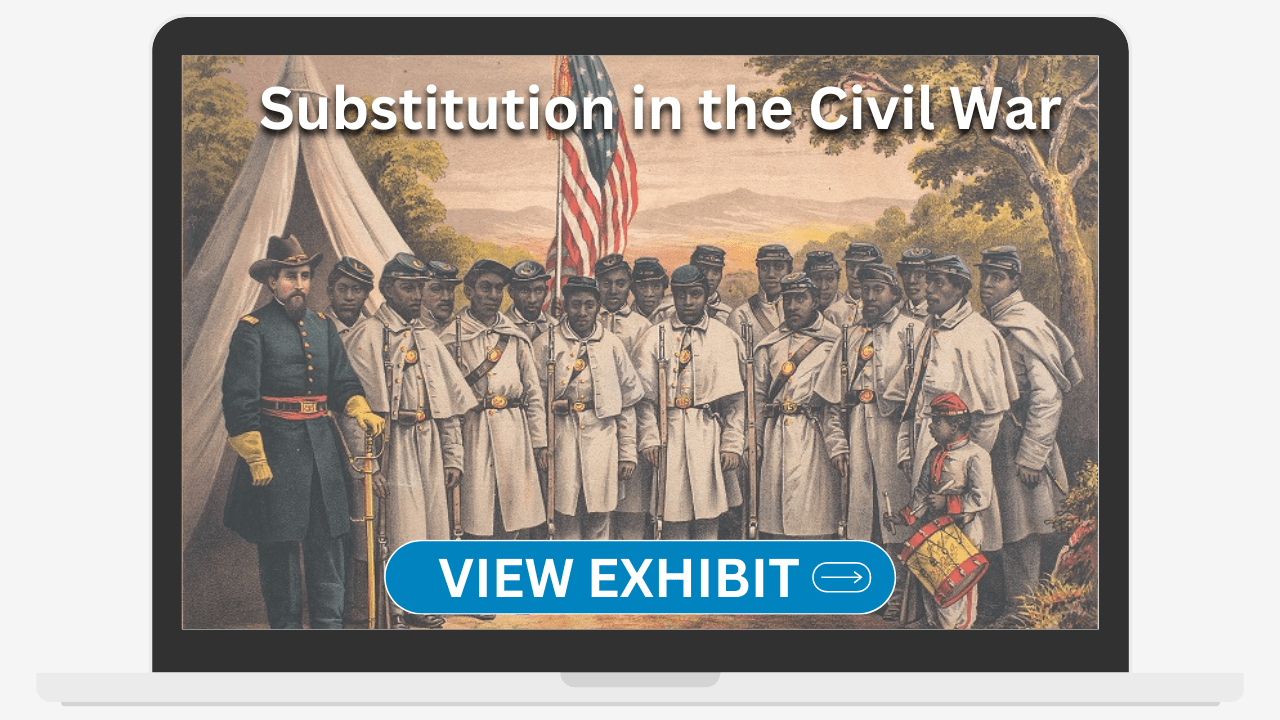From Border States to National Cemeteries
When the U.S. had to increase enlistments to handle the burden of manpower demands for the battlefield, a draft was legislated in 1863. A provision was written in that gave a drafted person the choice to pay someone who was willing to serve in their place. This was called substitution.
In the exhibit above, follow the path that four Black Americans from the Border States took in the Civil War. Through examination of enlistment records and battle reports, the story of Privates Jacob Saunders, James Murray, Thomas Jones and Harrison Lockwood illustrates the controversial nature of the substitution provision. Regardless of how they enlisted, each man served their country and were buried in National Cemeteries.
By Jacob Klinger
National Cemetery Administration history intern and West Virginia University doctoral student
Share this story
Related Stories

Exhibits
To Bring Light to Where There is Darkness: VA Chaplains and Religious Artifacts from the National VA History Center
For more than 150 years, VA chaplains have served Veterans with care and compassion, proving that they are indelible to the fabric of Veterans' health. Objects in this exhibit, housed in the National VA History Center (NVAHC), help tell the story of chaplaincy’s enduring presence and its profound impact on Veteran care.

Exhibits
VA Research at 100: A Century of Medical Advancements
In 1925, 100 years ago, the Veterans Bureau initiated the first hospital-based medical research studies to address Veteran-specific issues like mental health, tuberculosis, cancer and toxic exposure. The program has since made significant medical breakthroughs and innovations, impacting the world.

Exhibits
Adaptive Exhilaration: Equipment from the National Disabled Veterans Winter Sports Clinic
In 2024, the National Disabled Veterans Winter Sports Clinic, hosted by the Grand Junction VA Medical Center and co-presented with Disabled American Veterans, will donate adaptive ski equipment from the early years of the event to the National VA History Center in Dayton, Ohio. The clinic started in 1986 when VA established it and then held the the inaugural event at Powderhorn the following year. The clinic welcomed approximately 90 Veterans from 27 states, bolstered by a volunteer staff of about 20. Despite skepticism from many health professionals of the era, the clinic underscored the importance of physical activity for persons of all abilities.
This exhibit includes multiple items that were used at the early clinics, which are finding a new home at the National VA History Center.



